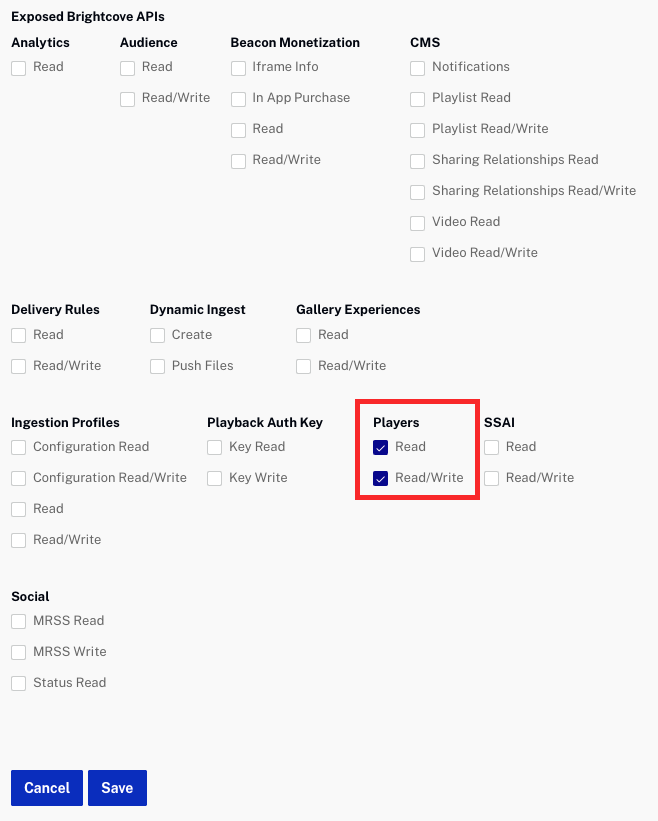Reporting on Brightcove Player Configurations
Get credentials
CodePen
Find all the code associated with this sample in this GitHub repository.Note the following:
- The report that displays all plugins loaded into the players in an account does not work with version 5 and older players.
- Also in the plugins report, plugins that start with @brightcove/ are Brightcove supplied plugins. The others are either custom plugins, or Brightcove supplied plugins manually loaded via Studio or curl.
See the Pen Brightcove Player Filtered Reports by Brightcove Learning Services (@rcrooks1969) on CodePen.
Using the CodePen
Proxy code
In order to build your own version the sample app on this page, you must create and host your own proxy. (The proxies used by Brightcove Learning Services only accept requests from Brightcove domains.) A sample proxy, very similar to the one we use, but without the checks that block requests from non-Brightcove domains, can be found in this GitHub repository. You will also find basic instructions for using it there, and a more elaborate guide to building apps around the proxy in Using the REST APIs.

